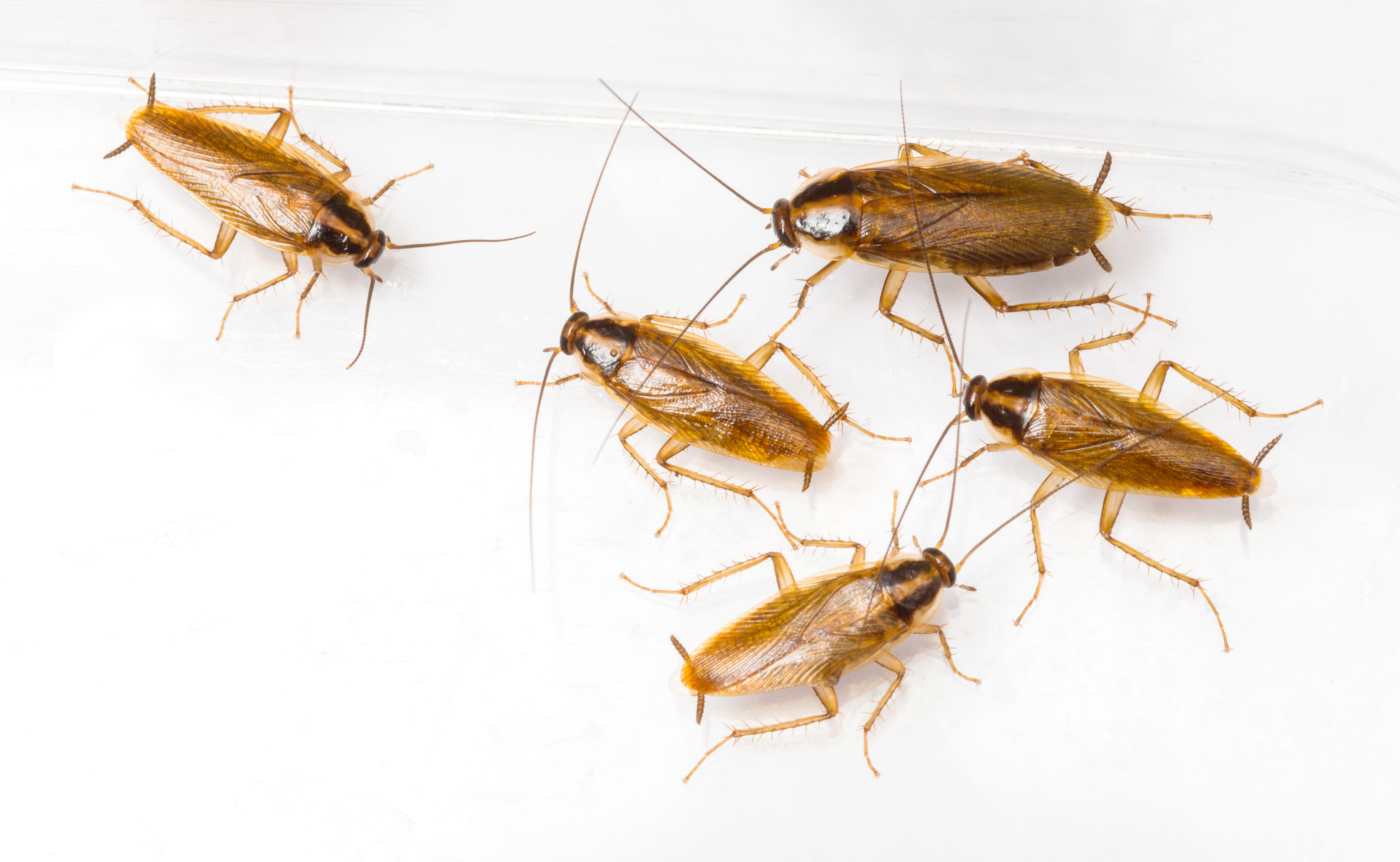You’ve just completed an extensive turnover in your two-bedroom, second-floor apartment. The place sparkles with fresh paint, shampooed carpets and new appliances. You have invested significantly to ensure the unit is rent-ready for the next occupant. You hand the keys to Sara, a new tenant thrilled about her new space. She shows excitement to be closer to her job and extended family.
For the first month, everything goes smoothly. Sara settles in, keeping her home clean and tidy and enjoying her new space. Until one evening after grocery shopping, she opens the kitchen cabinet to put away her groceries and notices a brown bug scurrying into the wall. Not thinking much of it, she shrugs it off and carries on. A week later, while cleaning behind her refrigerator, she spots more of them moving about, one even scaling the wall towards her cabinets.
Curious and a little unsettled, Sara snaps a photo and quickly researches online. It looks to be a cockroach, and even worse than that, it is a German cockroach, known for multiplying rapidly and invading living spaces. Just like that, the excitement about her new home grows into stress and concern.
This is Sara’s first time out on her own. She doesn’t know what to do or where the bugs are coming from. Without hesitation, Sara contacts you, her landlord. You respond in disbelief. You have owned this property for six years and have never received a bug complaint of this kind until now. However, the pictures that Sara shares with you tell a different story.
Asking Sara to handle the problem on her own is not an ideal option considering she just moved in. The lease is vague and does not clearly state who is responsible for pest control. To avoid upsetting your new tenant, you feel it is appropriate to hire a pest control provider.
After reaching out to a local pest control company, the situation escalates quickly. Because it is a multi-unit complex and the issue is worsening, the pest control technician recommends inspecting all units that share a wall with Sara’s unit. Unfortunately, the inspection revealed a significant infestation in the apartment directly above Sara’s.
According to the technician, the tenant living in this unit is harboring roaches as a result of clutter issues, unclean dishes left in the sink, and unsealed food left out throughout the unit. Roaches are likely migrating into Sara’s unit through wall voids, plumbing lines, and electrical outlets as a result of another tenant’s housekeeping habits.
German roaches are social insects with alarming reproductive abilities. Each egg capsule can hold between 30 to 50 eggs, and a single female can produce
multiple capsules in her lifetime. If left untreated, a few roaches can evolve into thousands in just weeks.
Roaches are no strangers to the rental industry and are often found in all types of housing, including newer apartment complexes and single-family homes. However, they are more commonly seen in properties built before 1950 where balloon framing, stone foundations, and older construction methods provide ample hiding places and interconnected wall voids that make it easy for pests to travel from one unit to another.
This is why landlords managing older housing stock or multi-unit buildings should be especially vigilant. The very structure of these buildings can help roaches spread faster than most property owners realize.
The Importance of Pest Control in Rental Properties
Pest control is one of the costliest and most complicated maintenance issues landlords face, not because of the direct expense alone, but because infestations can silently spread through interconnected spaces, impacting multiple units, disrupting numerous livelihoods, and driving up turnover rates.
Roaches gravitate toward kitchens and bathrooms due to the abundance of food, moisture, and dark hiding places. In poorly maintained units, clutter, cardboard boxes, and neglected cleaning make ideal habitats. But roaches do not only invade messy units. Even in clean apartments like Sara’s, roaches easily migrate from neighboring apartments through tiny gaps and cracks that are typically overlooked. If these roach-infested areas are left untreated, they can become unsanitary and uninhabitable conditions to live in. An infestation that reaches this level requires an aggressive and costly treatment plan involving countless hours of baiting, monitoring, trapping, cleaning and purging.
For Sara, the thought of creepy, crawly bugs overwhelmed her thoughts and made it difficult to sleep without feeling itchy and irritated. Being genuinely concerned for Sara, you could not help but dwell on the amount of money it was going to take to get the issue under control, resulting in sleepness nights for you, too.
How Infestations Begin
Pests can become a landlord’s nightmare in a variety of ways, even in properties with solid maintenance practices. Infestations begin gradually from a few sightings to sudden masses when left untreated or there are changes in the property’s environment. Understanding potential ways a roach can enter a home will help you to quickly identify smaller issues before they become harder to manage. For example:
Extermination of Neighboring Buildings: Roaches and other pests often flee chemical treatments from nearby areas, traveling through shared walls, floors, and ceilings to find refuge. Roaches will also travel from building to building in seek of food, shelter and water. Be aware of neighboring buildings that are receiving treatment services or have gone vacant. They may be the source of the problem.
Freebies & Second Hand Purchases: Eggs and larvae can be carried into a building or living space from tenants purchasing used furniture, bedding, clothes and appliances. Encourage your tenants to carefully inspect and clean all belongings being picked up for free on the side of the road, or purchased at yard sales, online markets and second hand shoppes.
Poor Housekeeping Habits: Food and pet food left out, dishes piled in the sink, cluttered counters, and clothes piled against the walls create the perfect habitat for insects to live and propagate. Keep a pulse on the housekeeping habits of your tenants. Address sanitation issues early and encourage better cleaning habits.
Move Ins and Move-Outs: People moving in and out of rental housing disrupts pest habitats, increasing pest activity and migration as the bugs seek new, undisturbed hiding spots. Prepare to seek professional services when inspecting a vacant unit and respond quickly when you begin receiving complaints from other tenants shortly after a new tenant moves in.
Even one neglected unit can compromise an entire building, making pest control a shared responsibility between landlords and tenant, and one that ultimately affects an owner’s profitability.
What Can Landlords Do?
There is no guarantee that any amount of treatment or the treatment used will eliminate a bug problem. The key is simply to manage the population and minimize its spread. There are a few routine practices that landlords can do to effectively manage pest problems:
Inspect Regularly: Include pest checks in your quarterly or biannual property inspections, especially in multi-unit buildings.
Set High Cleaning Standards: Enforce clear expectations for cleanliness in your lease agreements, and address violations promptly.
Consider Preventive or Supplemental Treatment: Consider routine or supplemental pest control services for common areas and units, even when no visible issue exists.
Seal Entry Points: Seal any cracks, wall voids, plumbing chases, and electrical outlets to reduce migration routes.
Treat Broadly: If one unit has a problem, inspect adjacent units immediately — roaches do not confine themselves to a single apartment.
Act Quickly: Pest problems can grow rapidly. Respond quickly to recommendations provided by the professionals.
Educate Tenants: Provide tenants with information on how to avoid attracting pests and encourage them to report issues early.
Final Thoughts
As illustrated in Sara’s story, even the best-maintained properties can fall victim to hidden infestations that may not be the fault of any one tenant or landlord. What matters is how proactive you manage the risk and how swiftly you respond when a problem presents itself.
Undesirable pests, like the roach, require a certain amount of respect and consideration. Maintaining rental housing to eliminate entry points, sealing cracks, and inspecting each unit routinely, especially when vacant, can keep you abreast of potential outbreaks before they spiral out of control.
When a complaint arises, respond quickly and seek a professional opinion. If caught early, treatment can be minimal and highly effective. But if ignored, the problem will quickly magnify itself, spreading through walls, floors, and adjoining units, resulting in compounding costs and damage to your property’s reputation. If it is stated in your lease that pest control falls on the tenant, consider supporting their efforts with a supplemental treatment of hallways, stairwells and other common areas.
Proactive pest management isn’t just good maintenance, it’s good business and will help your tenants to feel safe and satisfied in their living spaces.












